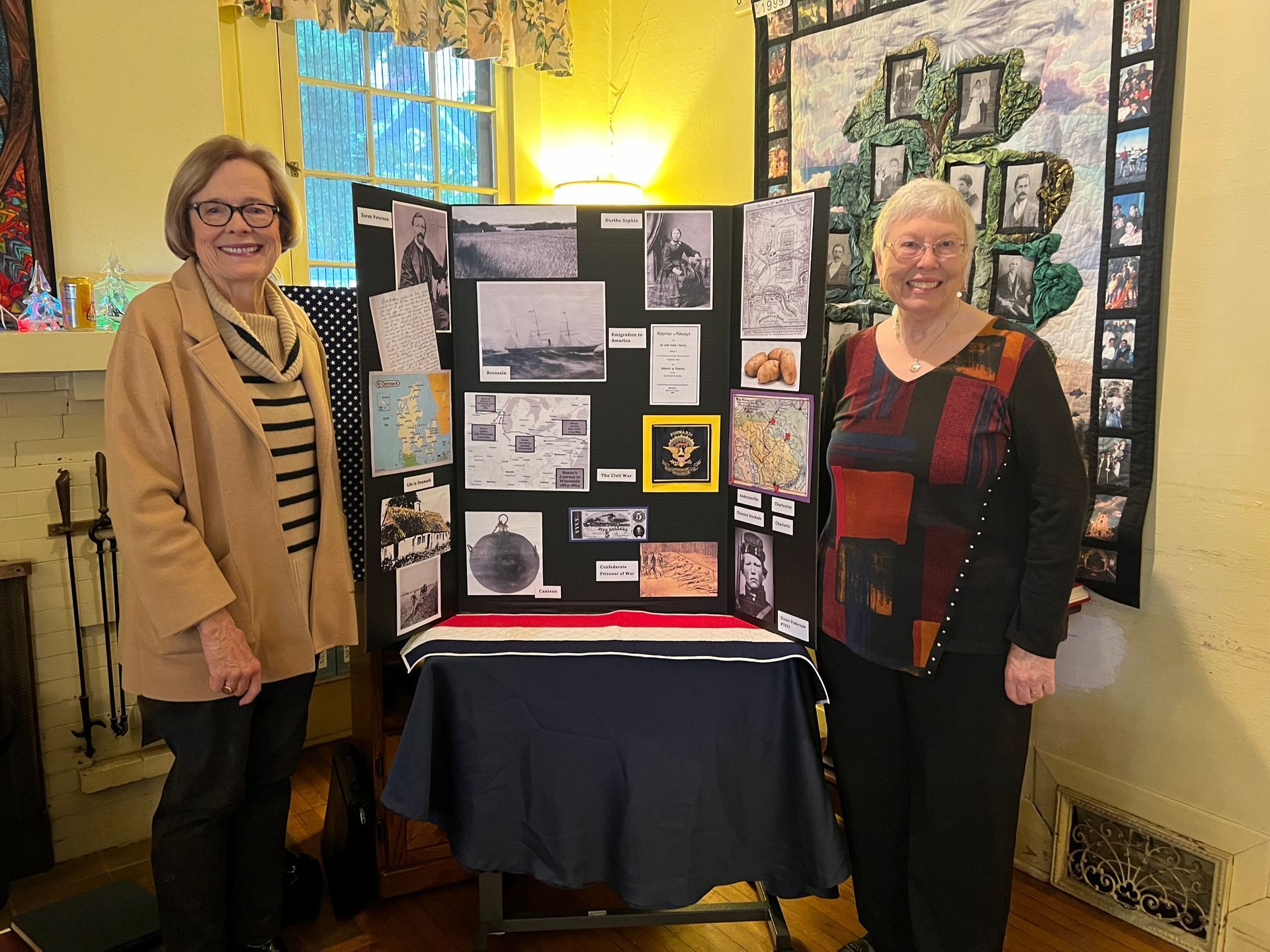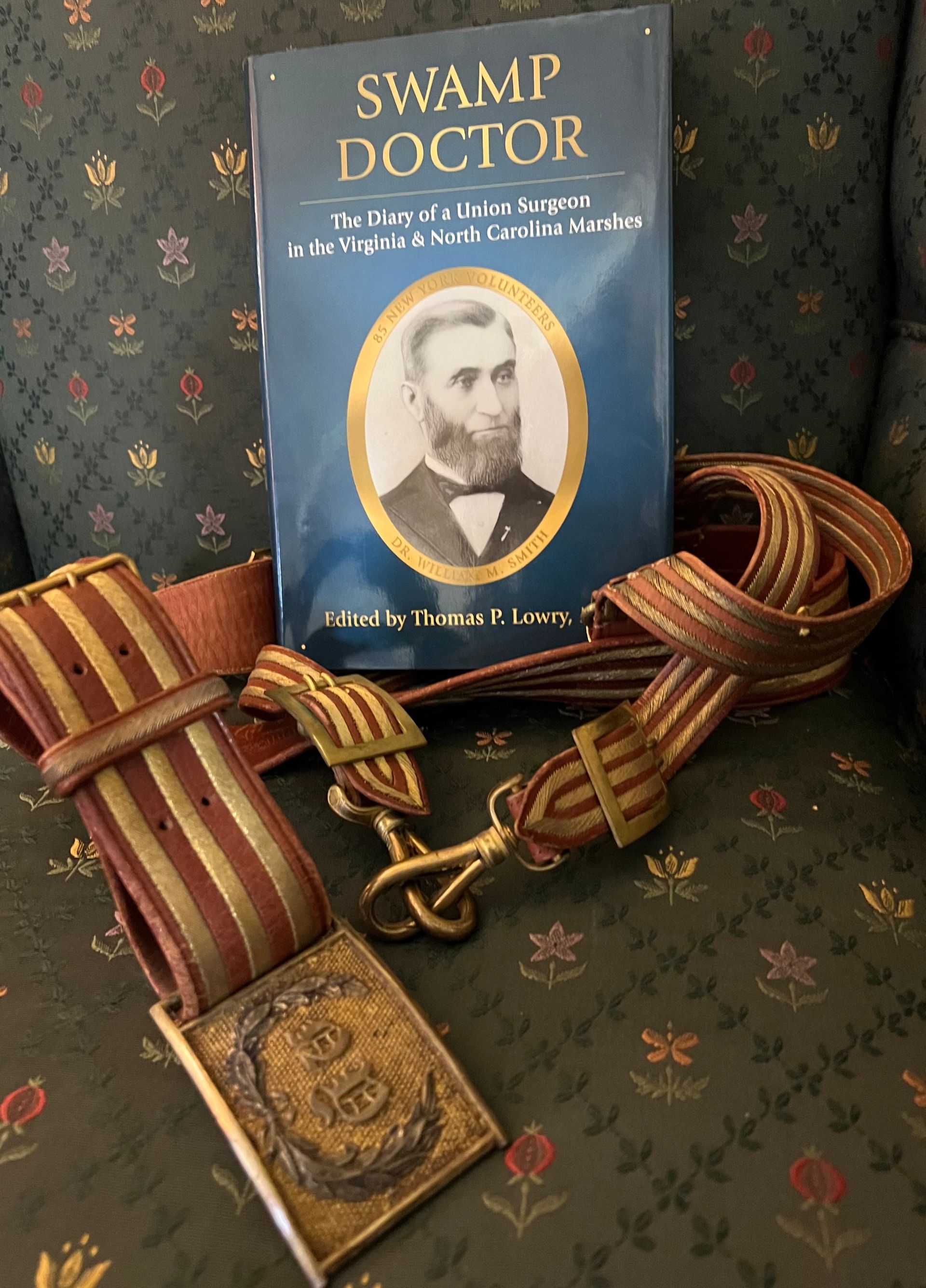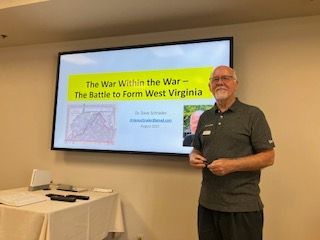


Ancestors in the Attic- January 20, 2024
Meliscent Peterson Gill and Patricia Louise Peterson spoke about their ancestor, Soren Peterson who was a Swedish emigrant and Civil War Veteran. Soren came to America to find work so he could get married. He wrote his family about his war experience, including a stay in Andersonville Prison. He survived, brought his wife to America and fathered several children. The letters told about his life at Andersonville, a time of starvation and disease. Soren miraculously survived, but his death was recorded at the camp. His American descendants spent years proving he did not die at Andersonville. The presenters wrote three books about the families including the Ancestors in the Attic: Soren Peterson Chronicles of Danish American Family. Afterwards the authors gave us tips on self publishingival
Civil War Sharing- Carole Rodenbucher described a tour she took of Civil War battlefields which involved her ancestor Robert Tate Sedam. She visited Fort Donalson, Shiloh, Corinth, and Champion Hill which is near Vicksburg. One of the stops was along the underground railroad which as it turns was actually a railroad. Next up was Carolyn Mueller who shared a sash, buckle and sash holder belonging to her ancestor, William Mervale Smith who was a "swamp doctor". She shared a book written about him entitled "Swamp Doctor- Diary of a Union Soldier" . Diane Carey Schmitz spoke about a trip to Grant's Farm which is north of St. Louis while Suzanne Spangler mentioned a museum in Antietam where the caretaker identified where her ancestor's regiment had fought.
Archival Storage Strategies & Solutions May 18 by Denise Levenick
Denise gave us the following tips: start by selecting archival quality storage containers making sure to purchase supplies from reputable archival suppliers. Use plastic products that have passed the Photographic Activity Test (PAT) and products made from new, pure materials; never recycled material. Select traditional materials such as 100% cotton rag paper, unbleached cotton muslin and cotton twill tape. Keep your collections together saving one box for Grandpa and one for Uncle Joe. When storing documents keep them unfolded, place them flat, in envelopes when necessary. Remove foreign objects like stapes, pins, paper clips before storing materials. Nest, store you materials in areas with moderate temperature and humidity avoiding light, posture pests, pollutants and unnecessary handling. The best areas are inside your heated, ventilated or airconditioned home in an interior closet or shelf, metal storage or filing cabinet. Avoid areas that are prone to water leaks or fluctuations in humidity, areas that may get hot in the summer like basements garages or attics and areas with plumbing or electrical issues.
The Red Cars by Michael Patris from the Mt Lowe Preservation Society gave us a pictorial talk on the development of Henry Huntingdon's red cars. We saw not just the red cars., but a glimpse of Los Angeles in the 20's through the 50's. Some of us remembered the red cars while others heard about them from our parents. Patris dispelled the myth that a conspiracy by oil magnates caused the demise of the cars.
West Virginia Statehood- On August 9th Dave Schrader gave a very informative talk on how West Virginia became a state. He started with some historical context especially how the idea of a western state in Virginia was not new, that it started with Continental Congress in 1774 discussing a separate state to be named "Vandalia"; Further into the revolution, the idea of forming "Westsylvania" was taken up. More importantly in 1829 Virginia decided to apportion state representation by counting 3/5 of the slaves. This greatly disadvantaged the western counties who were not typically slaveowners but farmers with smaller holdings and no slaves. These farmers were typically German or Scots-Irish as opposed to the English of the slave owning counties.
Schrader walked us through the Virginia convention, voting for succession of May 23, 1861 with most of the western counties voting to stay in the Union. June 11th unionists in the Western Counties held two conventions and petitioned Lincoln to become their own state in the Union. Francis JH Pierpont became the governor of the provisional state on July 1, 1861 and William Borman governor of the full fledged state in 1863. Thereafter West Virginia sent their troops to fight with the Unionists under General George McClellan.
Elizabeth Van Lew- Southern Spy for the North- Jana Bickel told the little known story about Elizabeth Van Lew, whose Northern family had moved south to Richmond, and become very wealthy business owners. Following her father's death, and Virginia's secession from the Union, Elizabeth and her mother at first quietly supported the union prisoners. Although most of their slaves were clandestinely freed, some chose to remain. As the war progressed, Elizabeth became the leader of an underground spy network for the North gathering intelligence and sending to the North. Elizabeth' work assisted the North in capturing Richmond. Elizabeth was rewarded was the office of Postmaster under President Grant but fell from grace after he left office. She stayed in Richmond but was an outcast. After her death she was forgotten by most until her story was reclaimed by later historians.